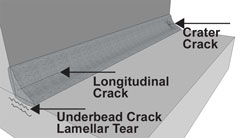Content

The profitability index is a technique used to measure a proposed project’s costs and benefits by dividing the projected capital inflow by the investment. Net present value is the difference between the present value of cash inflows and the present value of cash outflows over a period of time. Once the economy regained control, those temporary measures were revoked, and the discount rate was reverted to overnight lending only. The present value of a future sum of money can be obtained using the following formula. Owing to the rule ofearning capacity, a dollar at a later point in time will not have the same value as a dollar right now.
Is discount factor always less than 1?
Any discount factor equation uses the assumption that today's money will be worth less in the future due to factors like inflation, which gives the discount factor a value between zero and one.
There are formulas or functions to calculate the present value of the cash flows. These formulas do not separately require the calculation of the discount factor. Yet many analysts prefer to use the discount factor formula to get its values.
What Happens If You’re Using a Discount Rate That Is Too High or Too Low?
That is the rate of return that the investor could earn in the marketplace on an investment of comparable size and risk. In order to manage your own expectations for your company, and in order for investors to vet the quality of your business as an investment opportunity, you need to know how to find that discount rate. Using the right discount rate formula, setting the right rate relative to your equity, debt, inventory, and overall present value is paramount. https://business-accounting.net/ You’ll find that, in this case, discounted cash flow goes down (from $86,373 in year one to $75,809 in year two, etc.)because your discount rate is higher than your current growth rate. Therefore, it’s unlikely that, at this growth rate and discount rate, an investor will look at this one as a bright investment prospect. Discounted cash flow is a method of valuation that uses the future cash flows of an investment in order to estimate its value.
INVESTMENT BANKING RESOURCESLearn the foundation of Investment banking, financial modeling, valuations and more. DDMThe Dividend Discount Model is a method of calculating the stock price based on the likely dividends that will be paid and discounting them at the expected yearly rate. In other words, it is used to value What Is a Discount Factor? stocks based on the future dividends’ net present value. Let us take an example where the discount factor is to be calculated from year 1 to year 5 with a discount rate of 10%. Here, in the finished output sheet below, the present values of the cash flows calculated under both approaches result in the same figures.
Financial Markets and the Real Economy
In that blog post, we discuss why it is valuable to apply discounts to future cash flows when calculating the lifetime value of a customer . This discounted cash flow analysis requires that the reader supply a discount rate. If you wanted to look at it in the concept of the time value of money, discount cash flows analysis helps you to determine if an investment is viable or not.
Average business loan interest rates in 2022 – Yahoo Finance
Average business loan interest rates in 2022.
Posted: Fri, 10 Feb 2023 16:36:33 GMT [source]
Methodology is the central tool in finance to price assets and provides a natural framework to integrate contributions in discrete and continuous time. Because most models are written in continuous time in option pricing, one has established the link between these models and the discrete time approaches trying to emphasize the fundamental unity underlying both methodologies. A main difficulty is the interplay of the latent variables, which are everywhere present in the models and the inherent complex nonlinearities of the pricing formulas. A major thread that underlies the survey is the interplay between preferences and option pricing. Even though the preference-free nature of the early formulas was often cited as a major advantage, it was not clear where this feature was coming from. A factor of 0 will make the agent short-sighted by only considering current rewards, while a factor approaching 1 will make it strive for a long-term high reward. Even with a discount factor only slightly lower than 1, the Q learning leads to propagation of errors and instabilities when the value function is approximated with an artificial neural network.
